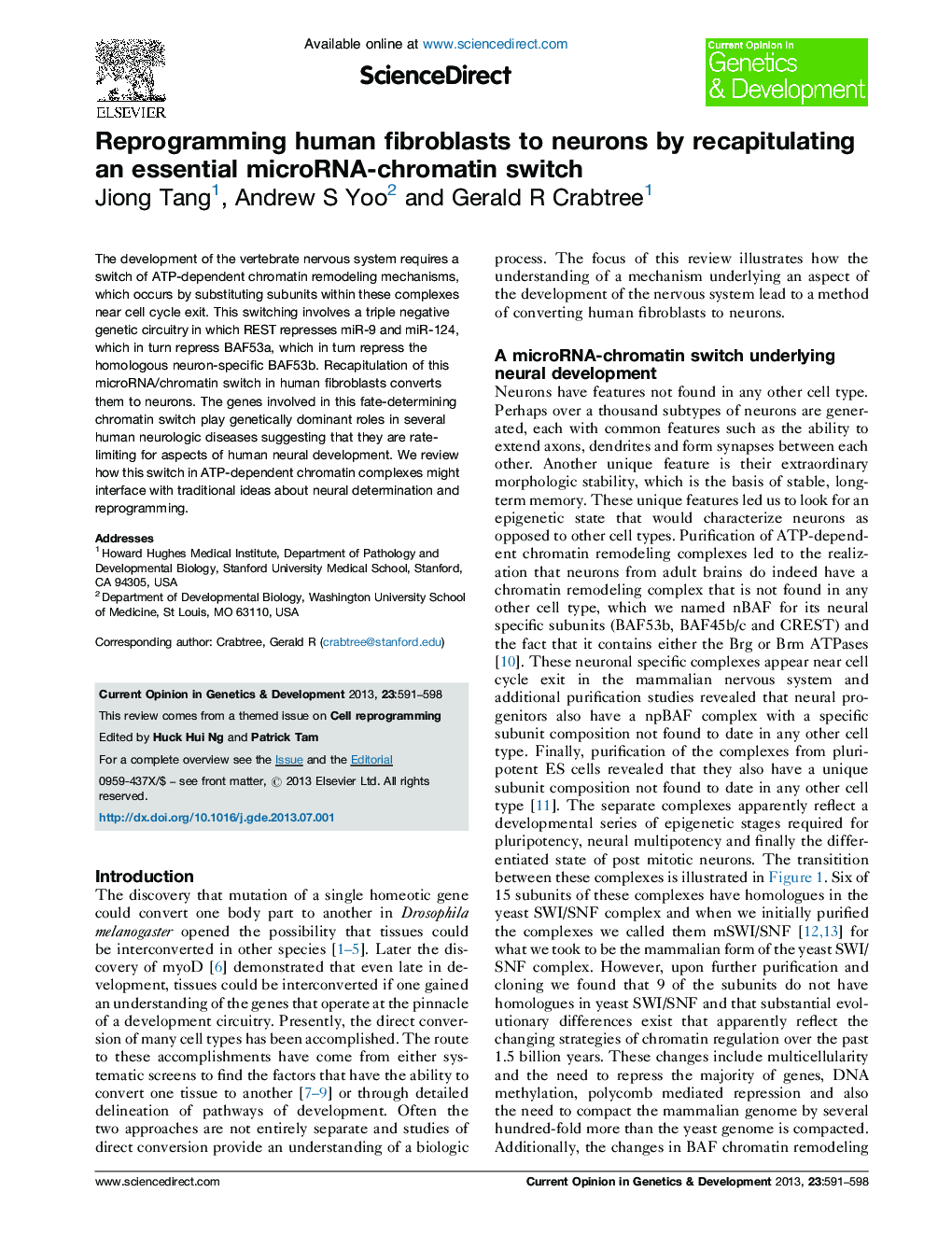| Article ID | Journal | Published Year | Pages | File Type |
|---|---|---|---|---|
| 5893673 | Current Opinion in Genetics & Development | 2013 | 8 Pages |
The development of the vertebrate nervous system requires a switch of ATP-dependent chromatin remodeling mechanisms, which occurs by substituting subunits within these complexes near cell cycle exit. This switching involves a triple negative genetic circuitry in which REST represses miR-9 and miR-124, which in turn repress BAF53a, which in turn repress the homologous neuron-specific BAF53b. Recapitulation of this microRNA/chromatin switch in human fibroblasts converts them to neurons. The genes involved in this fate-determining chromatin switch play genetically dominant roles in several human neurologic diseases suggesting that they are rate-limiting for aspects of human neural development. We review how this switch in ATP-dependent chromatin complexes might interface with traditional ideas about neural determination and reprogramming.
